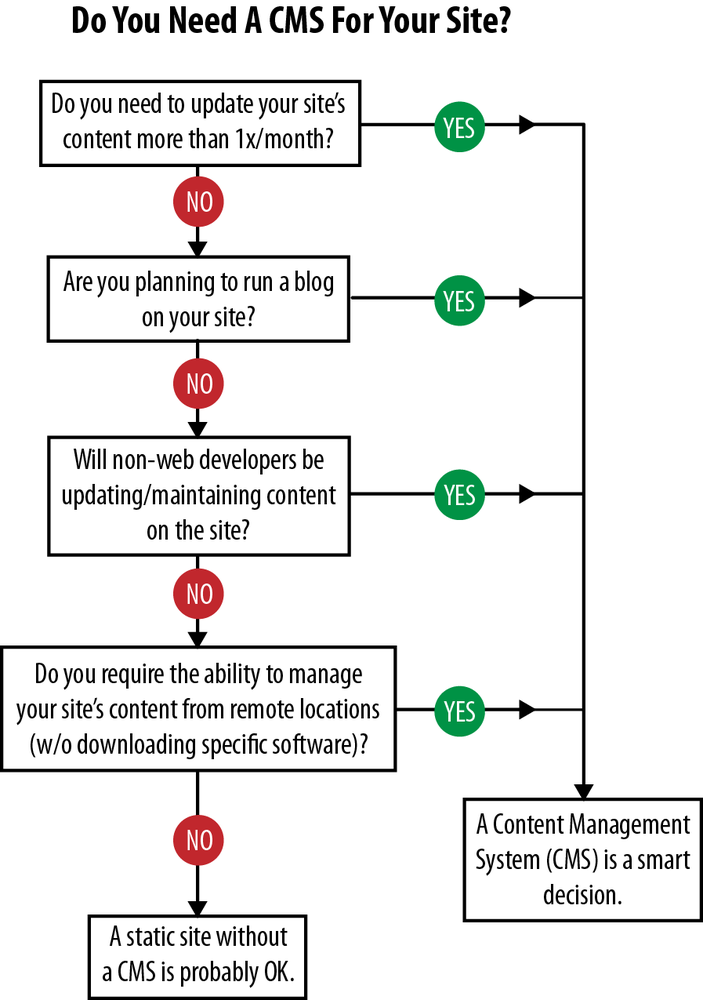Content Management System (CMS) Issues
When looking to publish a new site, many publishers may wonder whether they need to use a CMS, and, if so, how to ensure that it is SEO-friendly.
It is essential to determine whether a CMS is necessary before embarking on a web development project. You can use the flowchart in Figure 6-44 to help guide you through the process.

Figure 6-44. Flowchart to determine whether you need a CMS
Due to the inexpensiveness of customizable, free platforms such as Drupal, Joomla, WordPress, and Mambo, it is increasingly rare for a publisher to develop a static site, even when a CMS isn’t required.
The next step involves understanding how to ensure that a CMS will be search engine–friendly. Here is a list of basic SEO issues that you should be aware of when dealing with CMSs (both prebuilt and custom-made). By dealing with these, you will ensure a relatively smooth platform for content delivery:
- Title tag customization and rules
A search engine–friendly CMS must not only allow for title tags to be customized on a page-specific level, but also enable rules for particular sections of a website. For example, if your CMS requires that the title tag always has to start with your site name followed by a colon followed by your article title, you’re sunk—at least as far as your SEO is concerned. You should be able to revise the formulas used to generate the title tags across ...
Get The Art of SEO, 2nd Edition now with the O’Reilly learning platform.
O’Reilly members experience books, live events, courses curated by job role, and more from O’Reilly and nearly 200 top publishers.

